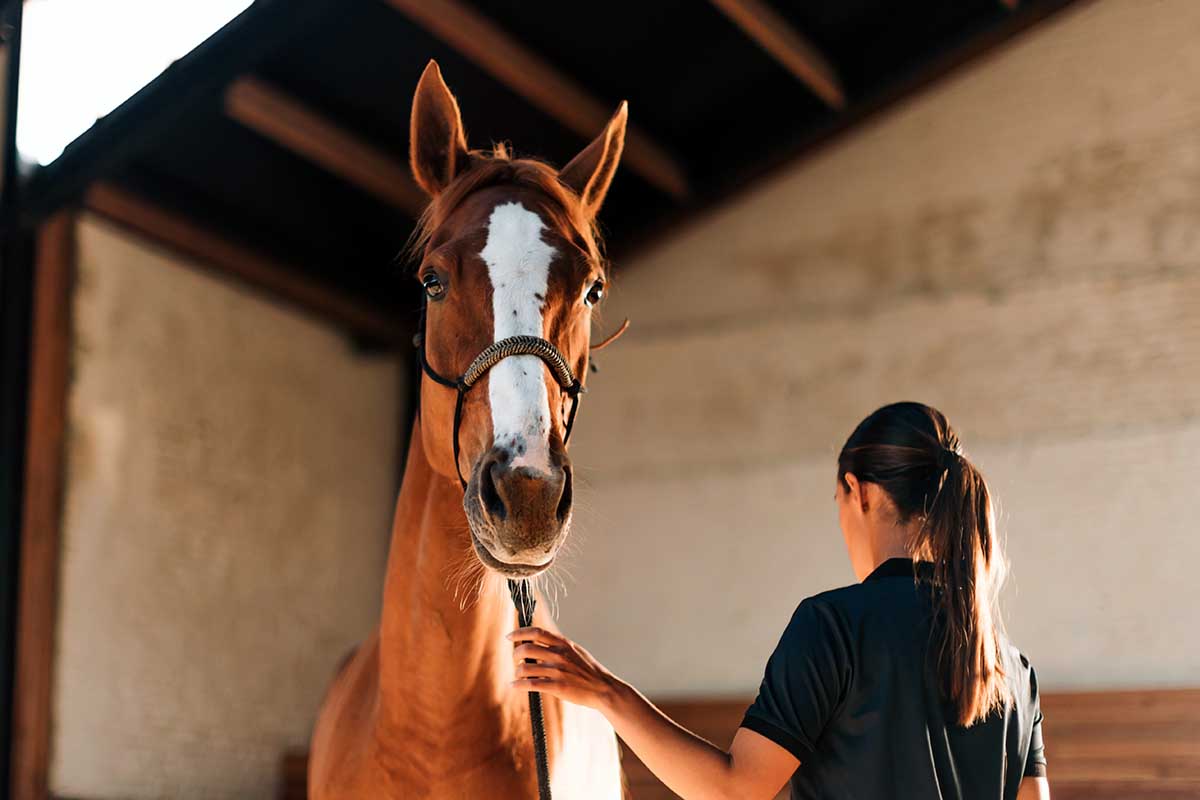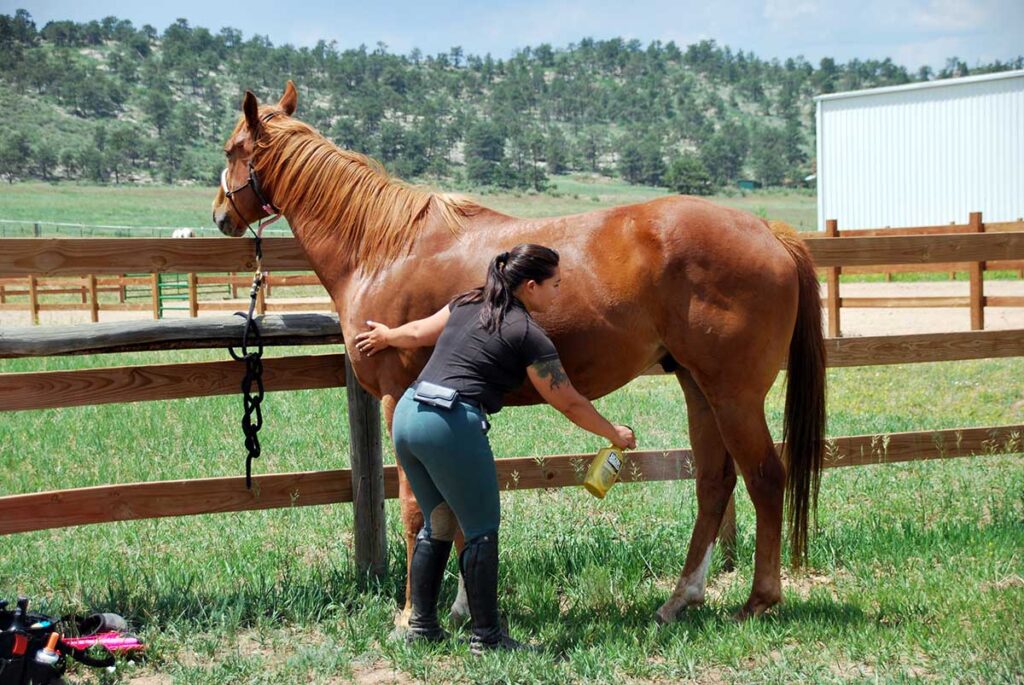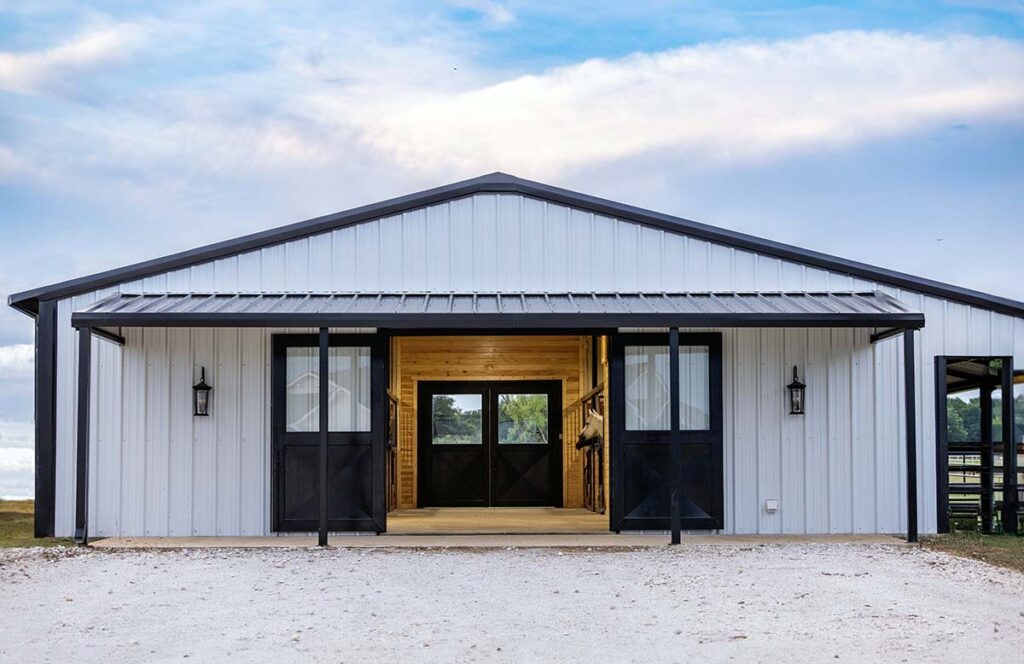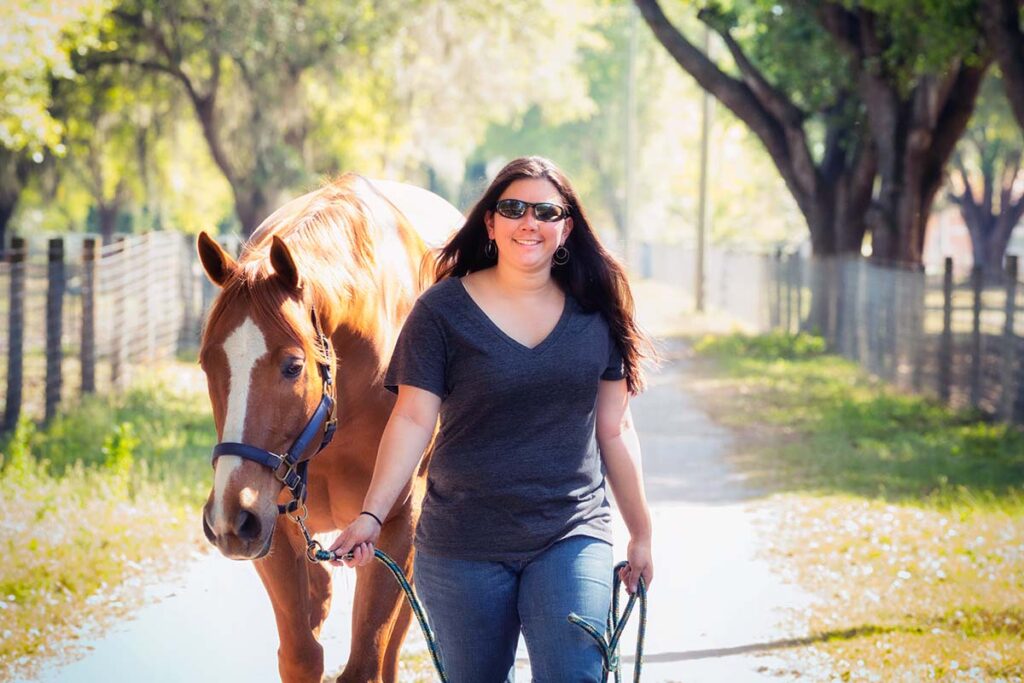Whenever we interact with horses, they are learning. Sometimes, these are things we intend to teach. But other times, horses might be learning things we don’t want them to learn.
Knowing how horses learn can help us advocate for them during training. We can create learning opportunities that leave horses feeling positive emotions while they learn new skills. Additionally, we can avoid training practices that carry a risk of causing behavioral injuries: lasting psychological damage that results when horses experience stressful or traumatic events they can’t cope with or process. Such injuries are challenging and time-consuming to address, and they compromise horse welfare.
Horses’ Cognitive Abilities
Horses are highly intelligent animals. Even though we share the same basic brain structures, the horse’s brain has evolved differently than humans. As it relates to learning, one of the key differences is in a region of the brain called the prefrontal cortex. In humans, this well-developed area is responsible for more multifaceted types of thinking, such as long-term planning, complex problem-solving, and even the act of deception. The horse lacks our level of prefrontal cortex development, making it impossible for the horse to engage in these sorts of mental activities.
To complicate matters, we might use our developed prefrontal cortex to engage in an activity that can hamper our horse-training abilities: projection. Projection is the act of putting one’s own abilities, thoughts, or feelings onto another. For example, we might credit the horse with abilities such as “faking” lameness, pretending to be frightened, engaging in behavior meant to deceive us, or doing things to make us look bad. In reality, the horse lacks the ability to do these things. Believing otherwise can lead us to respond inappropriately when training horses.
The Basics of How Horses Learn

One of the most useful ways to look at how horses learn is through nonassociative and associative learning. Researchers discovered these two types of learning more than a century ago. Understanding these processes can help us better train our horses.
Nonassociative Learning
Nonassociative learning is simple learning, concerned mostly with changes in how reflexes are expressed. Reflexes are relationships between specific events and the animal’s subsequent simple responses to that event. For example, a farrier drops nippers in the barn aisle (the event), and the young horse startles (the reflex). After repeated exposure to the event, the horse can develop either sensitization (an increase in response) or habituation (a decrease in response). So, if the farrier again drops the nippers and the horse once again startles, the horse would be showing sensitization to sudden loud noises at that time. On the other hand, if the horse showed a decrease in startle response each time the nippers dropped, he would be showing habituation to the sound.
Sensitization and habituation are both important to the horse in terms of its survival. Sensitization to the sound of twigs snapping might allow the horse to better escape a predator. Habituation to the feeling of rain running over the coat frees the horse up to better notice other stimuli that might be more important in that moment.
When it comes to training, we might view sensitization and habituation as either desirable or undesirable. A horse displaying sensitization might respond in a way the trainer desires, moving forward quickly when touched with a whip. Or a horse might habituate to constant leg pressure and show a decrease in response to the leg, frustrating the rider.
Associative Learning
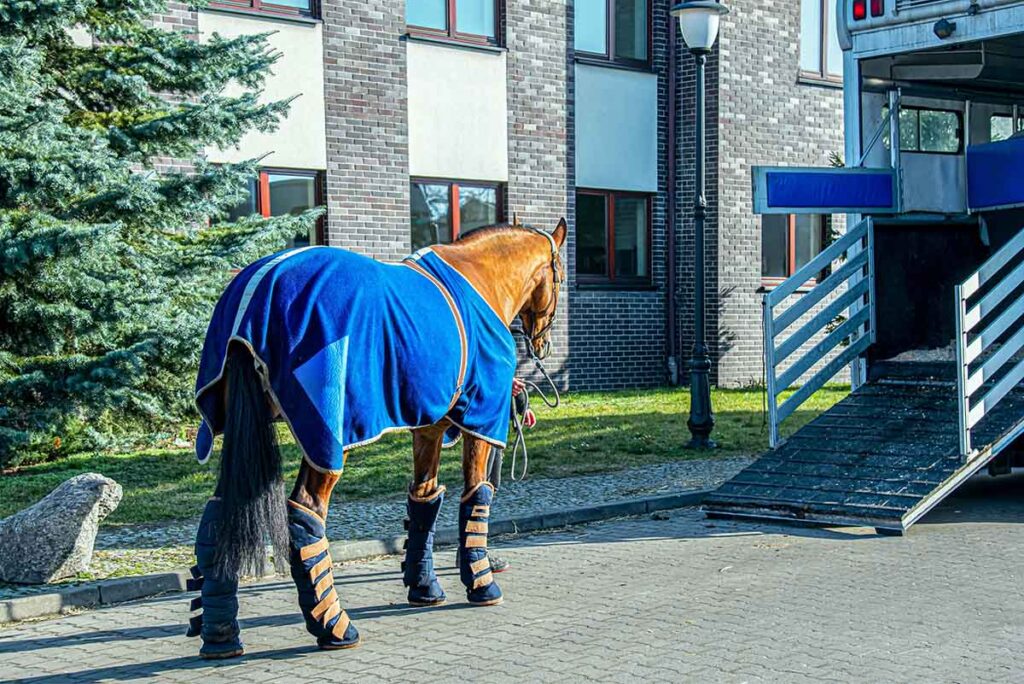
While nonassociative learning is about changes in simple, reflexive responses, associative learning is about the horse developing associations about things. There are two forms of associative learning. One is “this predicts that” and the other is “trial and error” or “trial and success.”
‘This predicts that’ learning (classical conditioning)
The first form of associative learning involves involuntary associations, or “this predicts that” learning. It happens when something that previously had no meaning to the horse, such as the sound of a feed room door opening, occurs repeatedly and closely in time with something that has meaning to the horse, such as eating grain. After a few event pairings, the sound of the feed room door opening (this) begins to predict the delivery of grain (that). This triggers involuntary feelings of pleasurable anticipation (the association).
This same learning process is responsible when horses develop distaste for or fear of specific things or experiences. When feelings of fear, stress, or pain pair with things or events, there is a considerable risk of creating unpleasant involuntary associations. A vaccination appointment (this) where the horse is handled roughly (that) can cause the horse to fear future vaccines. This is because vaccine appointments predict feeling fear and pain (the association). These involuntary associations are powerful and can be difficult to overcome. Therefore, we should be mindful not to teach a horse that any particular event or experience is scary or unpleasant. “This predicts that” learning is formally called classical (or respondent) conditioning, and conditioning simply means learning.
‘Trial and success/trial and error’ learning (operant conditioning)
This second form of associative learning is what horse people tend to focus on when training horses. It’s this category that results in horses learning how to perform behaviors we want them to do. Examples include loading in a trailer, changing canter leads, leading at our shoulder, and so on. A casual term for this process is “trial and success” or “trial and error” learning. When a horse “trials” or performs a behavior, a consequence (“success” or “error”) follows that shapes the horse’s future behavior. Technically, this form of how horses learn is called operant conditioning.
If a horse perceives the consequences of performing a behavior to be desirable—a success—he will be more likely to perform the behavior under similar conditions in the future. However, if those consequences are undesirable—an error—the horse will be less likely to perform that behavior in the future. When the horse views the consequences for performing behaviors as successes and the behavior increases in the future, we say the behavior has been reinforced. Conversely, if the horse views the consequences for the behavior as errors and the behavior decreases, we say the behavior has been punished.
Reinforcement and Punishment in Horse Training

Both reinforcement and punishment can shape future behavior, but one says “Yes” to a behavior while the other says “No.” Take, for example, training a horse to enter a trailer. The moment the horse steps forward, we can either release pressure on the lead rope or give the horse a small, tasty treat. Both of those things (the removal of pressure or the addition of a tasty treat) are desirable consequences for the horse and will likely result in an increase in stepping forward behavior in the future. We have communicated to the horse that, yes, stepping forward was the behavior we wanted to see happen. As long as our timing of the consequence occurs immediately after the horse performs the behavior, the horse will quickly learn the behavior of stepping forward leads to a pleasant consequence.
As the example shows, reinforcement can be something removed (pressure on the leadrope) or added (a treat) as a consequence for performing the stepping forward behavior. When we remove things like pressure to reinforce behavior, this is negative reinforcement. When we add things like treats, this is positive reinforcement. The technical terms negative and positive used here are not judgment statements. They simply indicate the removal (negative) or addition (positive) of something to affect the behavior.
While reinforcement makes behaviors more likely to happen, punishment makes behaviors less likely to happen. This is because, unlike with reinforcement, the consequences for performing a behavior are undesirable to the horse. Punishment says no to the behavior. For example, it is common practice to physically correct a horse when he performs an unwanted behavior, such as threatening to bite when saddled. The undesirable consequence of something being added the moment the horse does the unwanted behavior is called positive punishment. Remember, positive just means the consequence for biting involved the trainer adding something: a correction.
Negative punishment, or the removal of something to make a behavior less likely to happen, does occur in horse training, albeit much less frequently than positive punishment. In the springtime, when my horses are shedding and itchy, I will scratch them vigorously with my fingers. They often reciprocate as if I were another horse, using their muzzle to scratch me back. However, my gelding will sometimes overenthusiastically use his teeth to scratch me. As this hurts me, I immediately stop scratching him the moment his teeth come out. This removal of scratching is an unpleasant consequence. Therefore, it acts as a negative punishment for the behavior of using his teeth. When I start scratching again, his teeth stay behind his lips, and we both can enjoy the scratching.
When training, we usually want the horse to do only one specific thing in that situation, while there are countless things we wouldn’t want the horse to do. Training using positive punishment usually causes horses to feel pain, stress, or fear. This can result in the horse forming undesirable associations about training via classical conditioning. In light of this, horse behavior professionals recommend low-stress, reinforcement-based training that says yes to wanted behaviors.
Take-Home Message
Horses learn in many other ways, but these categories of learning are most relevant to us in terms of training. When we understand the basics of how horses learn, we are more likely to be successful in our training endeavors. We’re also more likely to minimize the chances we cause horses behavioral injuries. Approaching training with this knowledge also helps us strengthen the bond we have with our horses and improves their welfare.
Related Reading:
- How To Find a Horse Trainer
- How To Teach Your Horse to Pick Up His Foot
- From Body Language to Behavior: How Horses Communicate
Lauren Fraser, MSc, FFCP, has helped people understand horse behavior problems since 2006. With a background working as a horse trainer, an MSc in clinical animal behavior, and more than a decade working as an equine behavior consultant, Lauren’s approach gets to the heart of why horses behave the way they do and addresses issues using low-stress methods. Lauren also guest lectures at universities, presents at conferences, and creates educational programs for horse owners and equine professionals.
Are you enjoying this content? Sign up for My New Horse’s FREE newsletter to get the latest horse owner info and fun facts delivered straight to your inbox!

